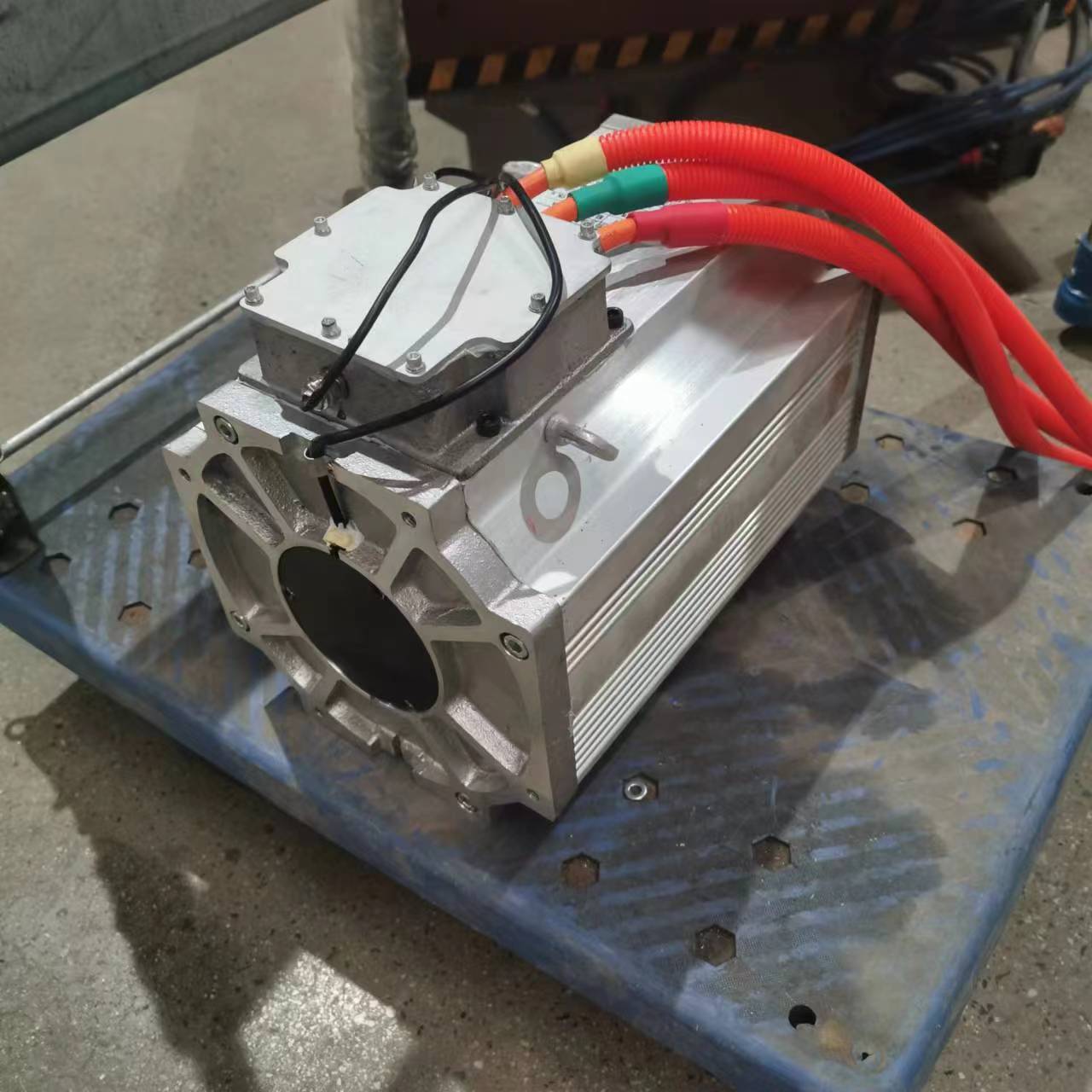According to the 2021 global new energy brand sales data released by the CleanTechnica website:
In 2021, the cumulative sales of new energy vehicles worldwide reached nearly 6.5 million , an increase of 108% over the same period last year . Tesla is far ahead with nearly one million units sold. BYD ranked second with sales of 593,900 units , a year-on-year increase of more than 220%, and a global market share of 9.1%.
The most important thing for current new energy vehicles is the three-electric system, and the motor that drives the vehicle forward is obviously extremely important. Tesla and BYD, the two champions and runners-up, have different choices in motors. European and American car companies mainly use AC asynchronous motors , with representative car companies such as Tesla and Mercedes-Benz; Chinese car companies mainly use permanent magnet synchronous motors , with representative car companies such as BYD and Ideal Auto. What are the differences between the two types of motors that prompt car companies to make different choices?
The internal structure of the asynchronous induction motor and the permanent magnet synchronous motor clearly distinguishes the two motor technologies. The rotor of the permanent magnet synchronous motor is a permanent magnet, referred to as PMSM in English. The rotor of the asynchronous induction motor is not a magnet but a closed coil, which is commonly known as a squirrel cage structure, referred to as ACIM in English. We will not go into the principle in depth.
Asynchronous induction motors and permanent magnet synchronous motorsFeatures
1. The rotor has no excitation winding, so there is no rotor copper loss, so the efficiency is higher; 2. High-performance permanent magnetic materials provide excitation, the given power is small, and the volume can be reduced; 3. The rotor has a small moment of inertia, so the dynamic performance is good; 4. Larger power and torque output at low efficiency.
Disadvantages of synchronous motors:
High cost, low reliability, complex processing technology and poor mechanical strength.
1. There is no problem of permanent magnet demagnetization at high temperature, and the peak power, rated power and peak power working time can be extended. 2. The motor characteristics are less affected by the environment; 3. It has high starting torque and high-speed torque adjustment;
Disadvantages of asynchronous motors:
The rotor magnetic field comes from the stator excitation, there is copper loss, and the energy conversion rate is lower than that of the permanent magnet synchronous motor.
The advantages and disadvantages of electric motors in new energy vehicles
Models that choose AC asynchronous motors tend to prioritize performance, taking advantage of the performance output and efficiency advantages of AC asynchronous motors at high speeds. The representative model is the early Model S. Main features: When the car is at high speed, it can maintain high-speed operation and efficient use of electric energy, while maintaining maximum power output and reducing energy consumption.
Models that choose permanent magnet synchronous motors tend to prioritize energy consumption, using the performance output and efficient operation of permanent magnet synchronous motors at low speeds, and are suitable for small and medium-sized vehicles. The characteristics are small size and light weight, which can increase endurance. At the same time, it has good speed regulation performance and can maintain high efficiency when facing repeated starts and stops, acceleration and deceleration.
Asynchronous induction motors and permanent magnet synchronous motors have their own advantages, so some OEMs consider combining the characteristics of the two motors to match them. For example, the front axle is equipped with a low-speed and high-efficiency permanent magnet synchronous motor, and the rear axle is equipped with an AC asynchronous motor that tends to have high-speed performance. The two work closely together and are more efficient.
Although the barriers to electric vehicle power systems are not as high as those of fuel vehicles and their types are relatively single, both types of motors require an electronic control system with very powerful algorithms to control them in order to achieve excellent power consumption and linear acceleration of the vehicle. The electronic control system requires sufficient battery power, so the three-electric level of electric vehicles is the essence of a pure electric vehicle.
Summarize
Permanent magnet synchronous motors and AC asynchronous motors differ in principle, so their characteristics are also different. AC asynchronous motors have good reliability, high speed performance, and easy cost control. Permanent magnet synchronous motors have high power density, high energy conversion efficiency, and low energy consumption. At present, permanent magnet synchronous motors are still more suitable for subsequent development, and the combination of the two is also a good choice.
- E N D -
Post time: Jun-05-2025
